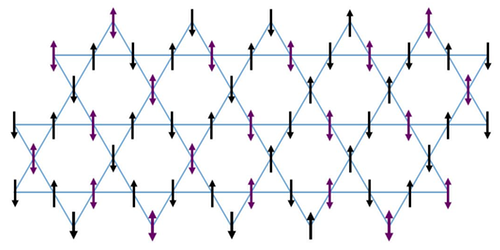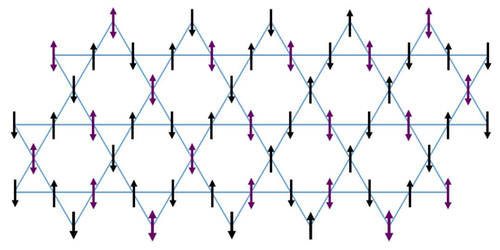Superconductivity Model Misses Its Target
High-temperature superconductivity may arise from a disordered spin state, as found in so-called quantum spin liquids. To test this theory, an experimental group doped a quantum spin liquid, called herbertsmithite, and measured changes in its electronic properties. Unexpectedly, the doped samples showed no hints of superconductivity; they didn’t even register as normal conductors. Theorists now have their work cut out explaining why the predictions were off.
The mystery of high-temperature superconductivity is that the traditional mechanism—a phonon-based coupling between electron pairs—does not apply. Among the different models proposed, one involves quantum spin liquids, which are solid crystals whose geometry prevents a simple up-down (antiferromagnetic) pairing of neighboring spins. As a result of this “geometric frustration,” the spins fluctuate (like a liquid) between different pairings. Theorists suggested that adding electrons or holes—through doping—to a spin liquid would allow some of these fluctuating spin pairs to move, and this would lead to superconductivity.
To check this, Tyrel McQueen and colleagues at Johns Hopkins University in Maryland used herbertsmithite, ZnCu3(OH)6Cl2, a quantum spin liquid with a hexagonal crystal structure called a kagome lattice. Previous attempts to dope herbertsmithite (through substitution of elements) have distorted the lattice, thereby canceling the geometric frustration that the spin liquid relies upon. The team started with normal herbertsmithite crystals and inserted lithium atoms—at varying concentration—between the kagome lattice layers. X-ray diffraction measurements verified that the main crystal structure was still in place. However, resistance measurements showed that the material remained insulating, even with the electrons donated by lithium. This contradicts theory, which predicted that doped spin liquids would exhibit multiple phases, most notably a metallic phase and a superconducting phase.
This research is published in Physical Review X.
–Michael Schirber
Michael Schirber is a Corresponding Editor for Physics based in Lyon, France.





